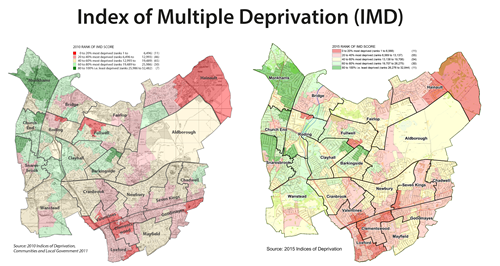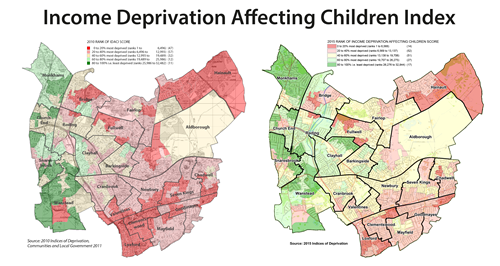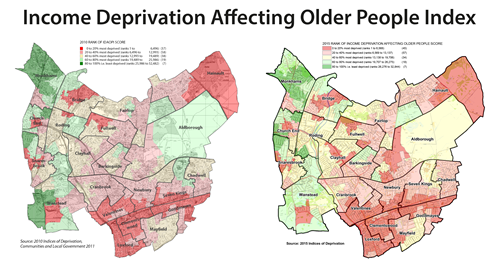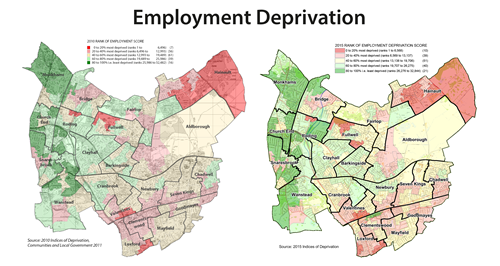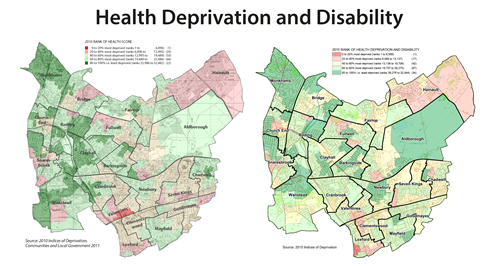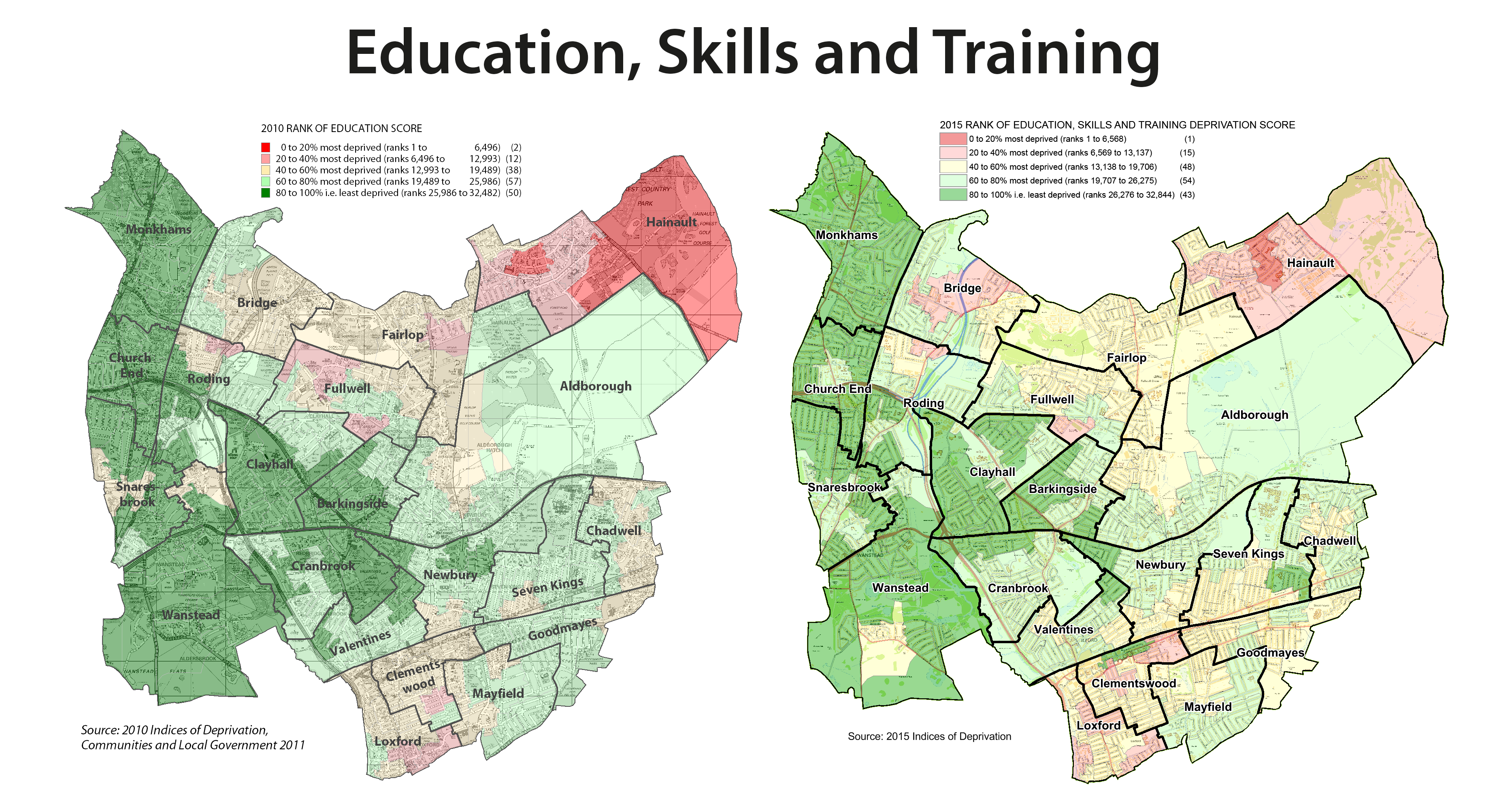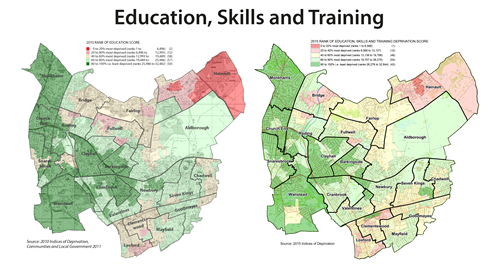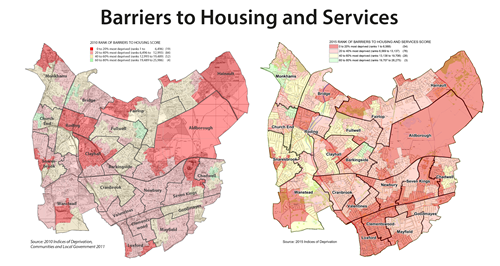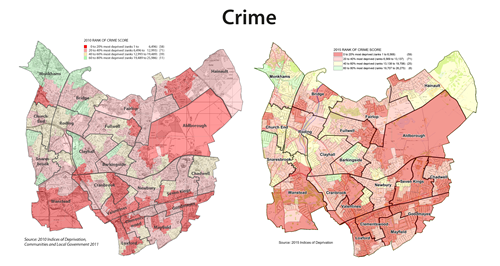This domain measures the quality of the local environment including the quality of housing, air quality and road traffic accidents.
Key facts for Redbridge:
- nineteen neighbourhoods in Redbridge are amongst the 20% most deprived in England in terms of living environment, which is much lower than the 28 there were in 2010
- the number of neighbourhoods in Redbridge amongst the 10% most deprived in England in terms of living environment also reduced from 7 to 4
- there continues to be no neighbourhoods in Redbridge amongst the 20% least deprived in England in terms of living environment
- Aldborough has the most deprived neighbourhood in Redbridge in terms of living environment (this was previously a neighbourhood in Clementswood)
- The least deprived neighbourhood in Redbridge in terms of living environment is now in Fairlop, having previously been a neighbourhood in Monkhams
This thematic map shows the broad distribution of deprivation across Redbridge in terms of living environment in 2010 and 2015.
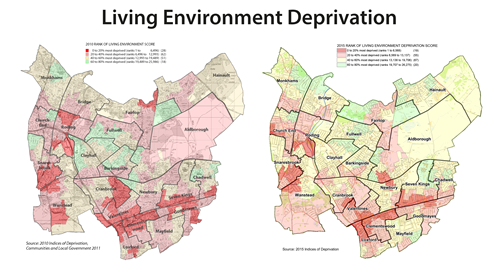
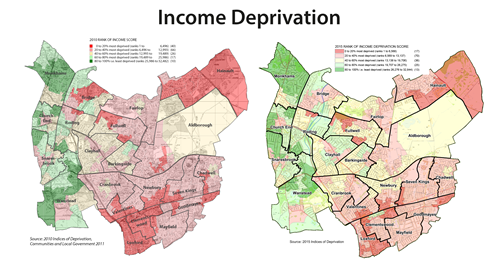
 Deprivation in Redbridge
Deprivation in Redbridge
